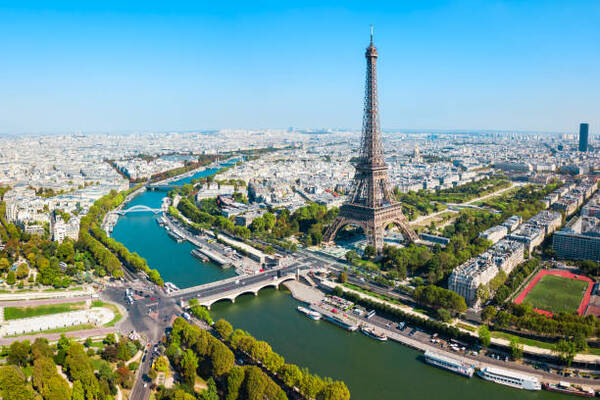Published on
August 12, 2025 |
France remains the world’s most visited country yet has largely avoided the tourism backlash sweeping through other parts of Europe because it planned ahead. Through early investments in sustainable tourism, a powerful rail network, regional diversification, and strict regulations on short-term rentals, France has managed to welcome over 100 million visitors in 2024 while preventing the overcrowding and unrest seen in neighboring nations.
In 2024, France welcomed over 100 million visitors, yet it has experienced surprisingly few protests related to tourism. This calm stands in stark contrast to other popular European destinations. In Greece, locals have expressed their frustration through graffiti on walls, while in Italy, Portugal, and Spain, communities have resorted to water fights and large-scale demonstrations to push back against overwhelming tourist numbers.
As anti-tourism sentiments rise across Europe, France remains a notable exception. Despite being the world’s most visited country, it has largely avoided the kind of unrest that has become common in its neighboring nations. Residents elsewhere are increasingly vocal about issues like overcrowded cities, rising rents, and disruptive visitor behavior. Yet France manages to keep these tensions relatively low.
France’s success in sidestepping major tourism unrest stems from a blend of interlinked strategies rather than a single solution. Although the possibility of future tensions cannot be ruled out, several core elements help maintain its stability. At the heart of this balance is a long-standing dedication to sustainable travel, a well-developed and resilient infrastructure, and carefully crafted policies that guide visitor flows across a wide variety of regions and throughout different times of the year.
France took a long-term view on managing tourism well before many other countries began to grapple with the consequences of mass tourism. The nation’s tourism development agency made sustainability a core principle years ago. As part of a decade-long plan launched in 2021, the government committed nearly €1.9 billion to promote greener and more responsible travel.
This comprehensive strategy prioritizes rail travel over short-haul flights, invests in the development of mid-sized cities, and encourages visitors to explore beyond the typical hotspots like Paris and Nice. The aim is to distribute tourist flows more evenly and reduce pressure on the most frequented areas.
In 2024, France reinforced these efforts with new investments designed to create a tourism sector that is more environmentally friendly, inclusive, and digitally advanced. The goal is to promote longer stays, ease overcrowding, and offer more meaningful and authentic experiences to travelers.
A cornerstone of France’s tourism strategy is its expansive rail system, one of the continent’s largest, offering seamless connections across cities and regions. With 28,000 kilometers of tracks, including 2,800 kilometers of high-speed lines, train stations serve even smaller towns with populations of around 20,000. High-speed rail makes it possible to travel from Paris to Marseille in just three hours, fundamentally changing how tourists move around the country.
In 2023, France introduced a ban on certain domestic flights where the journey can be completed by train in under two and a half hours. Although the direct impact on climate change remains to be fully assessed, the policy has clearly boosted train travel and encouraged tourists to visit regions that often get overlooked.
Another strength lies in France’s rich diversity of destinations. Unlike countries known for just a handful of famous sites, France offers an array of distinct regions, each with its own unique attractions and well-developed infrastructure. From the majestic châteaux of the Loire Valley to the picturesque vineyards of Alsace, visitors have countless options to explore beyond the usual tourist circuits.
France’s longstanding tradition of welcoming travelers, combined with a robust tourism infrastructure, has helped insulate it from some of the challenges seen in other top destinations. Moreover, visitor numbers from emerging markets such as India, Southeast Asia, Australia, and Africa have been steadily increasing. These travelers often seek experiences outside major cities, helping further disperse tourism demand.
Despite its success, France still faces challenges. Frequent strikes affecting rail and air services are a common occurrence, and issues like overcrowding and rising housing costs in popular neighborhoods remain concerns. For instance, the recent Olympic Games in Paris attracted a massive influx of visitors, with the city recording more than 50 million tourists in 2024 alone. Neighborhoods such as Montmartre have seen residents raise alarms about increasing crowds.
To address these issues, local authorities have introduced regulations aimed at managing tourism’s impact. New laws empower cities to limit short-term holiday rentals, reduce the allowable rental periods, and impose fines on landlords who violate rules. These measures are intended to prevent housing shortages and price hikes seen in other European cities heavily reliant on tourism.
Overall, France’s blend of forward-thinking policies, regulatory frameworks, and sustained investment in sustainable tourism appears to be keeping the balance. At a time when many destinations struggle with overtourism, France’s careful planning and strategic approach may well be its strongest advantage in maintaining its position as the world’s most beloved travel destination.
